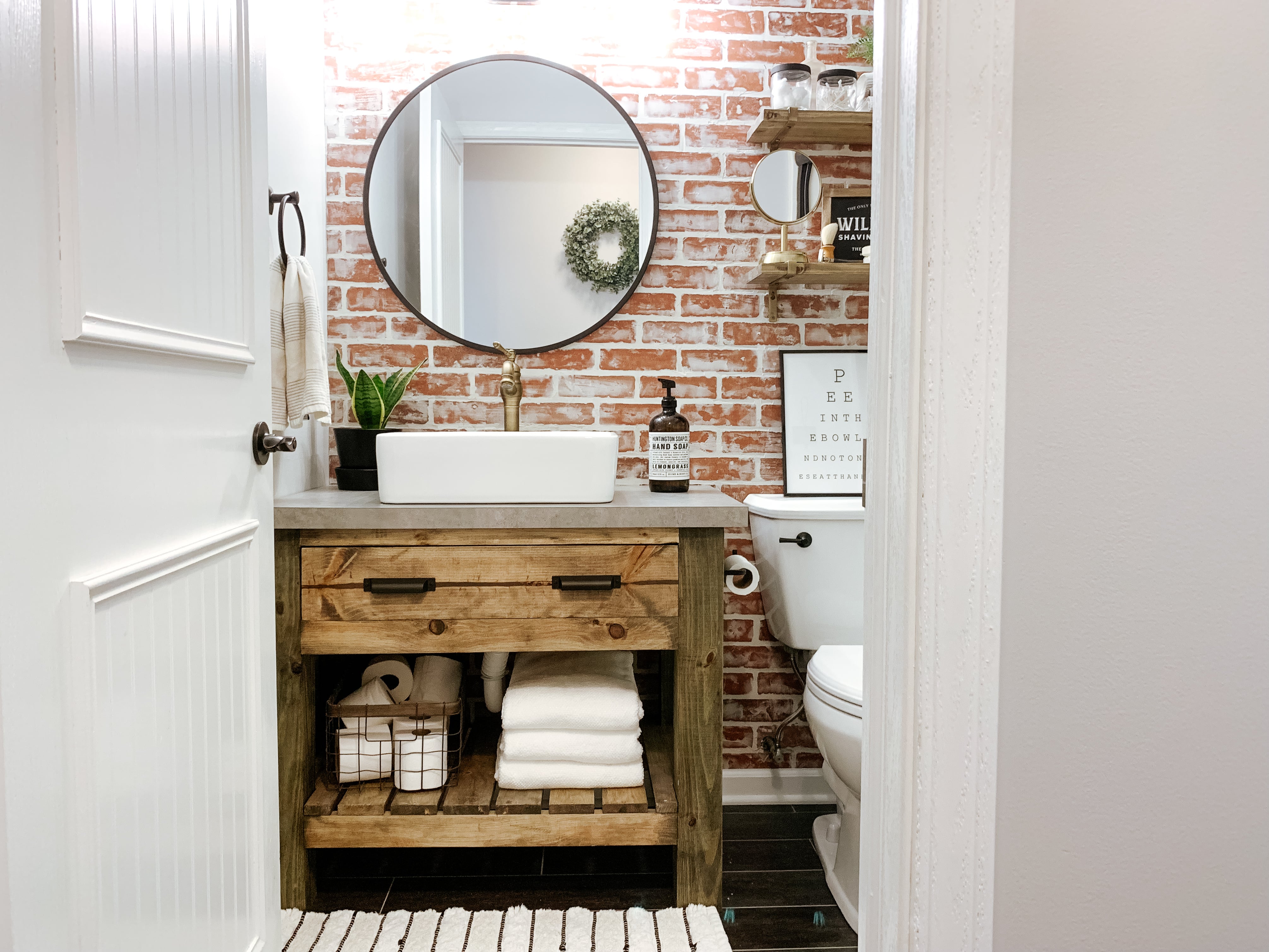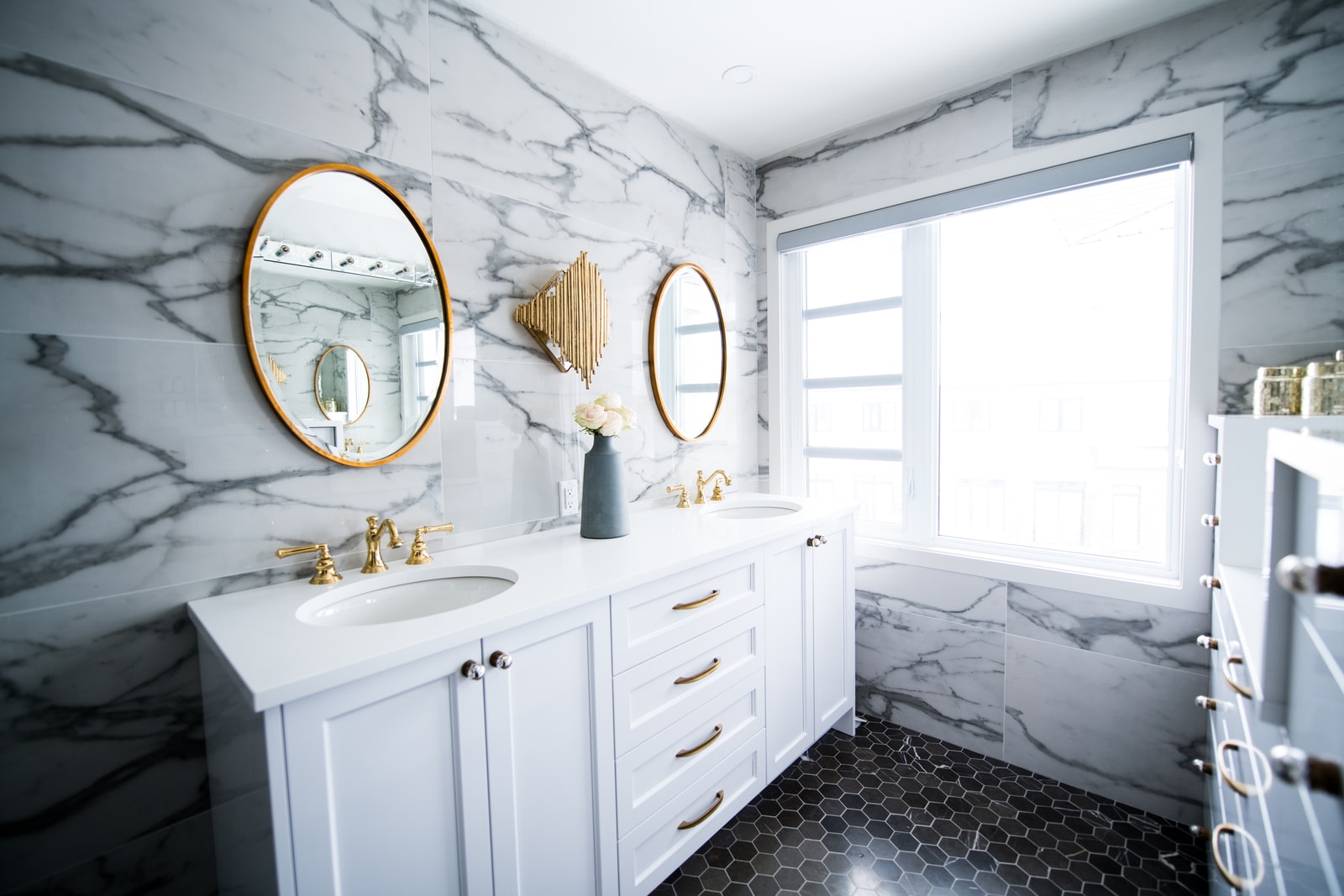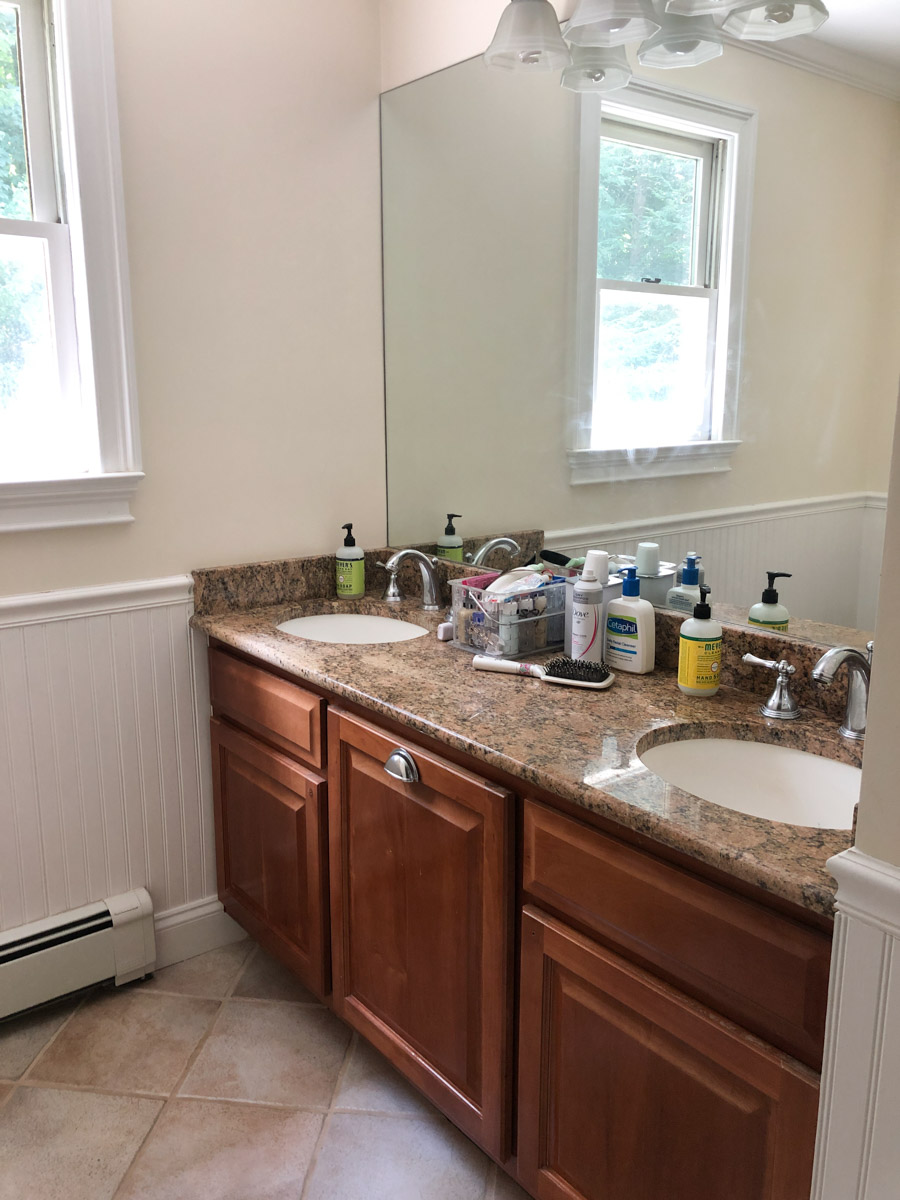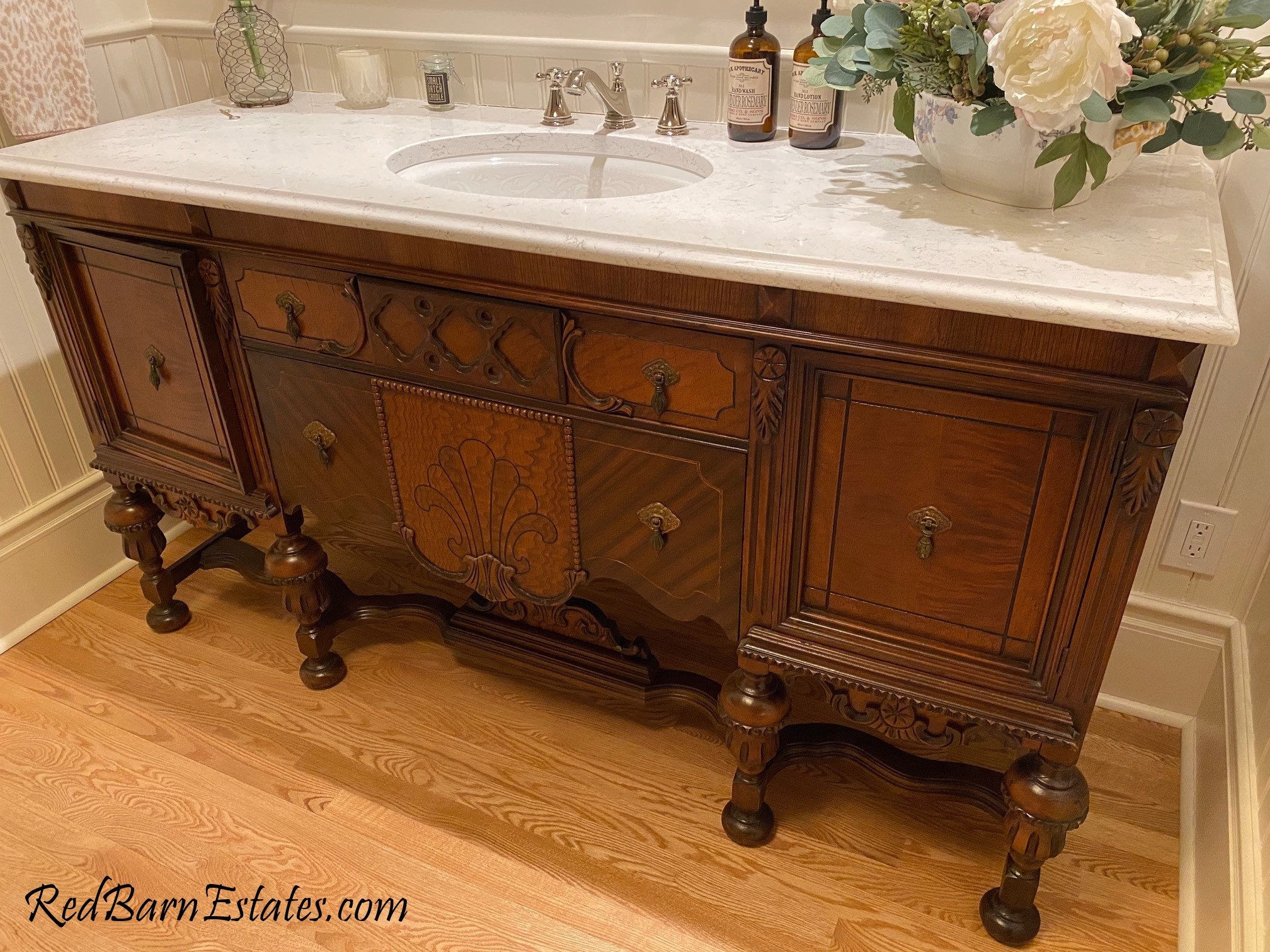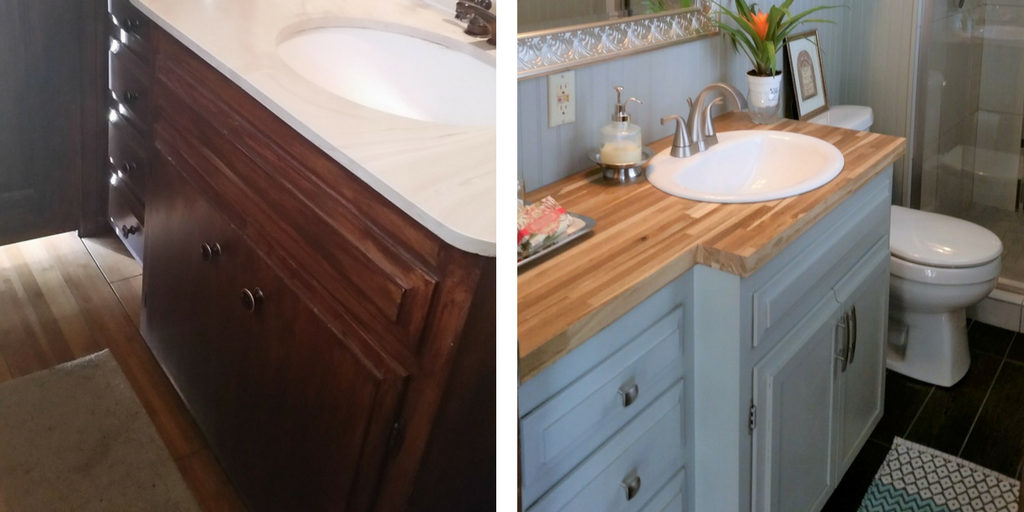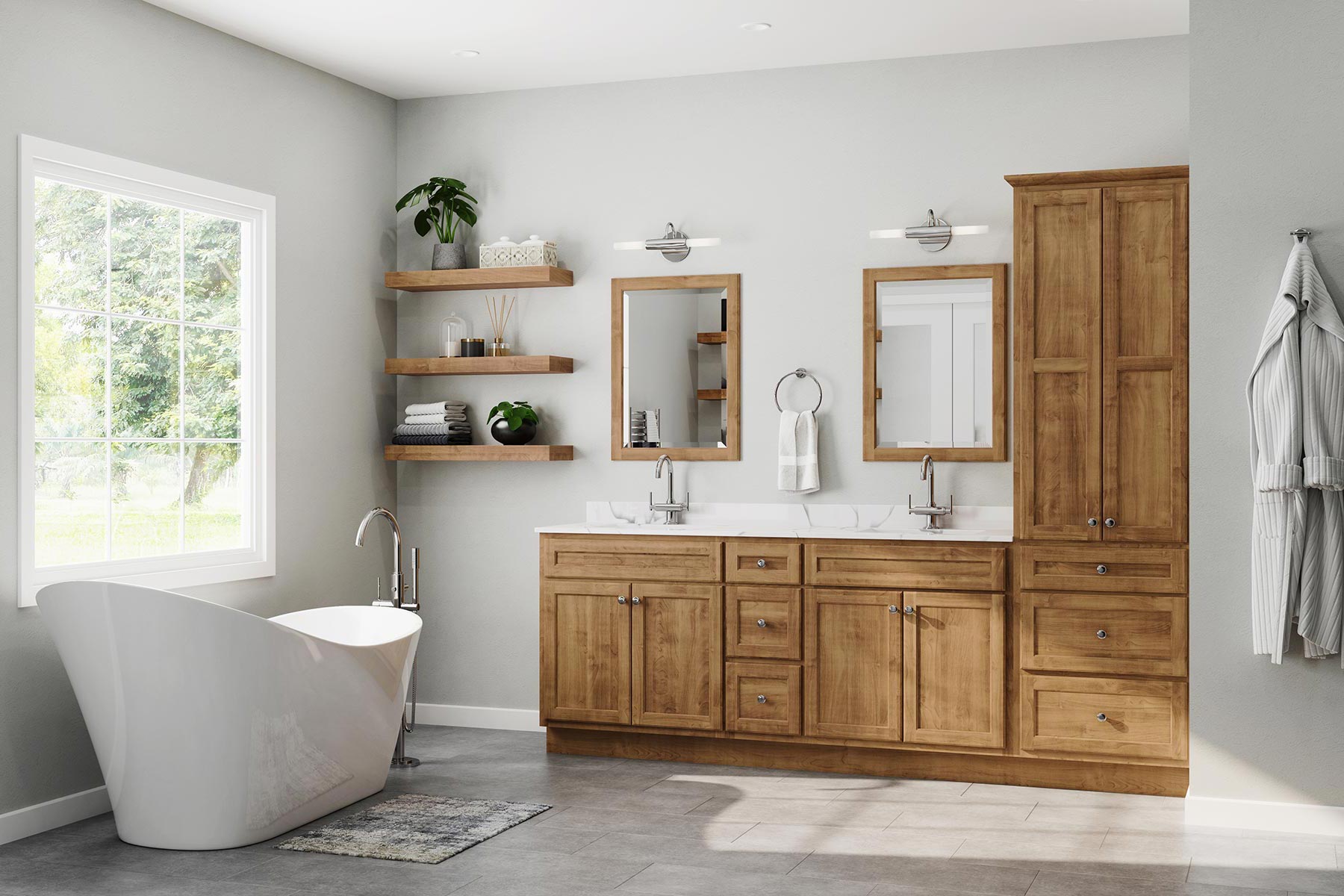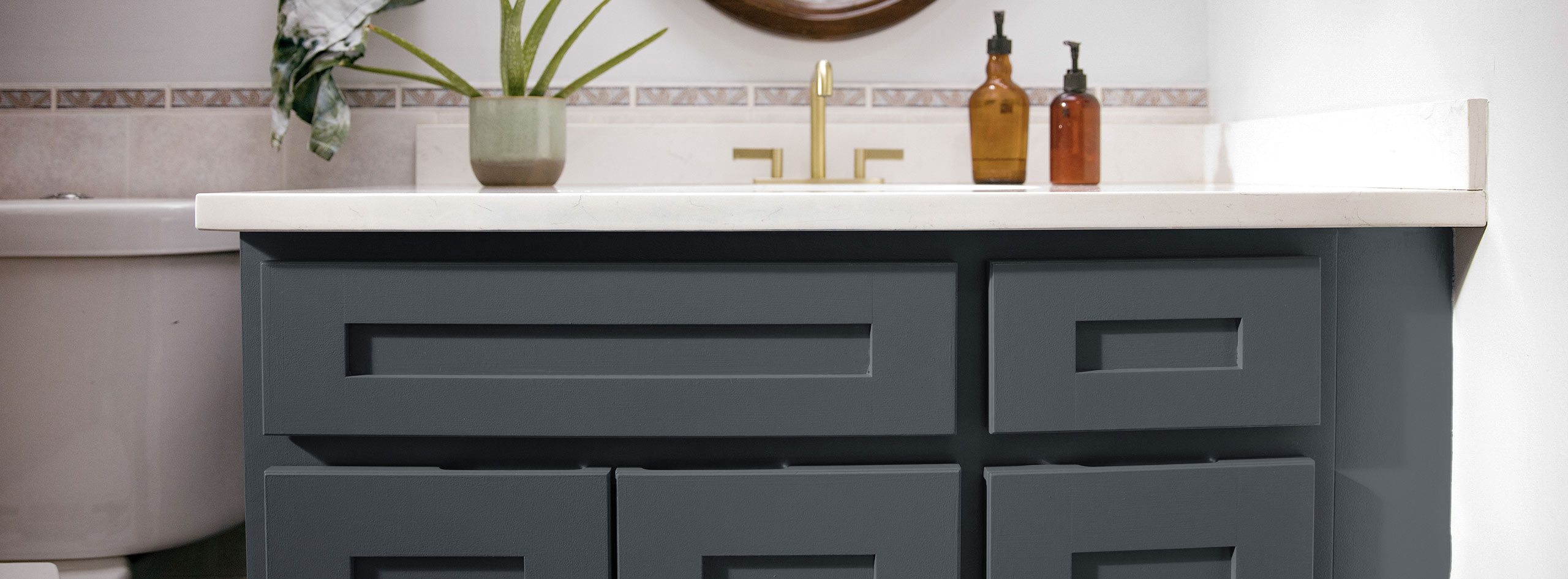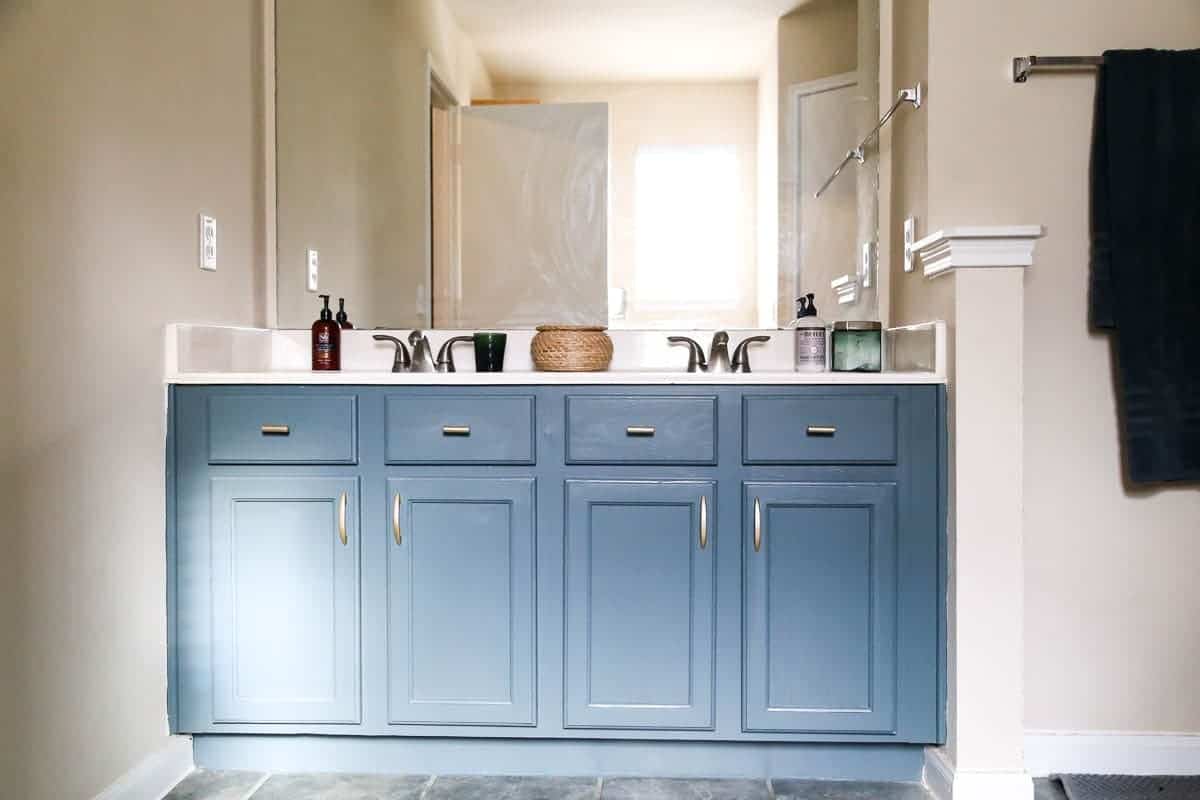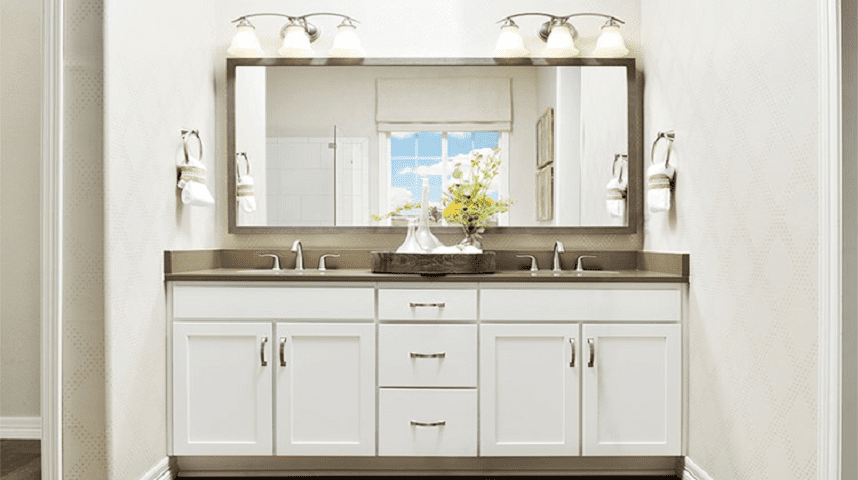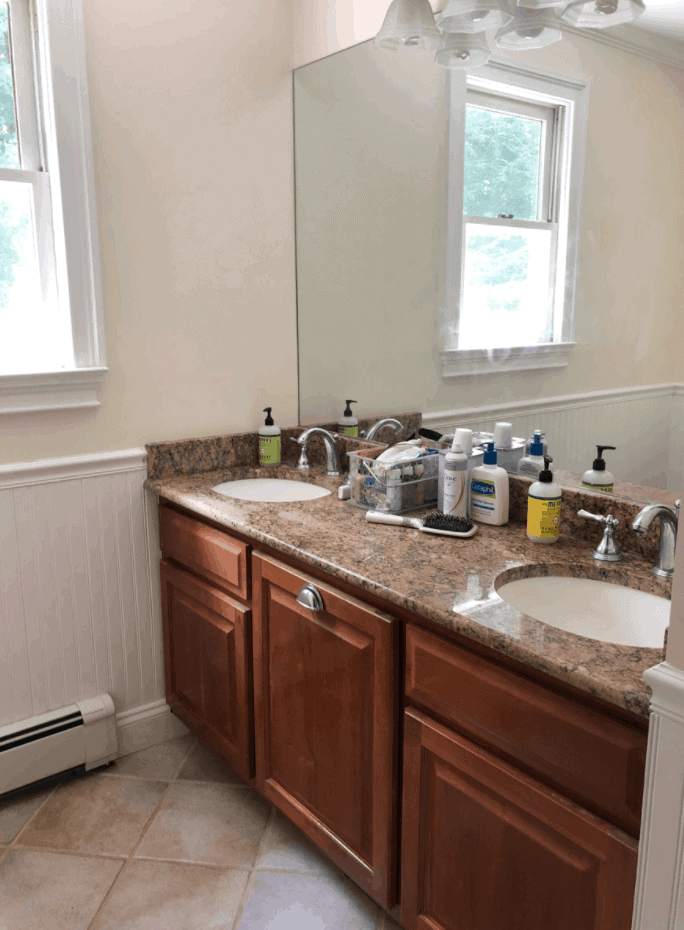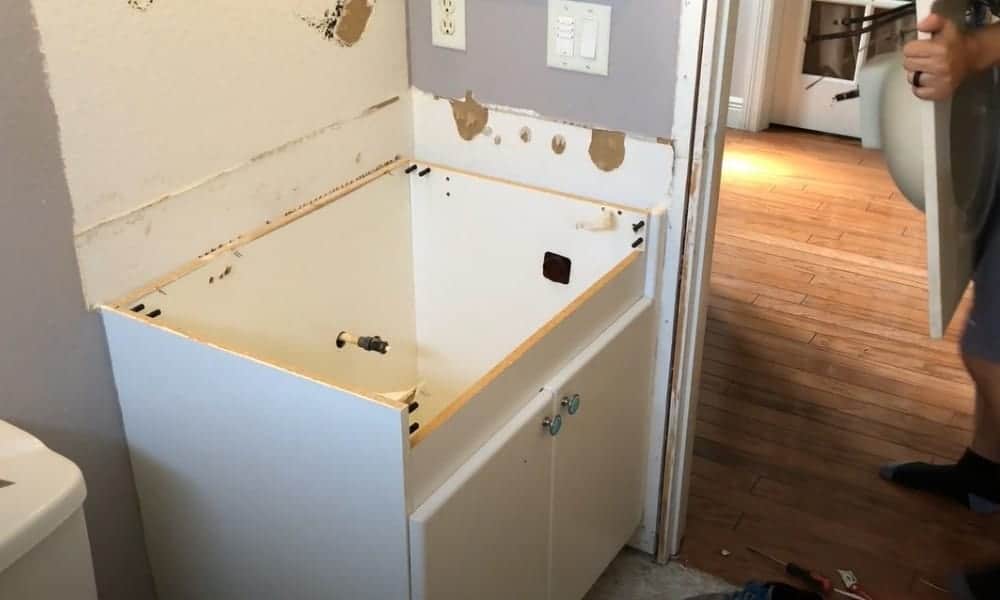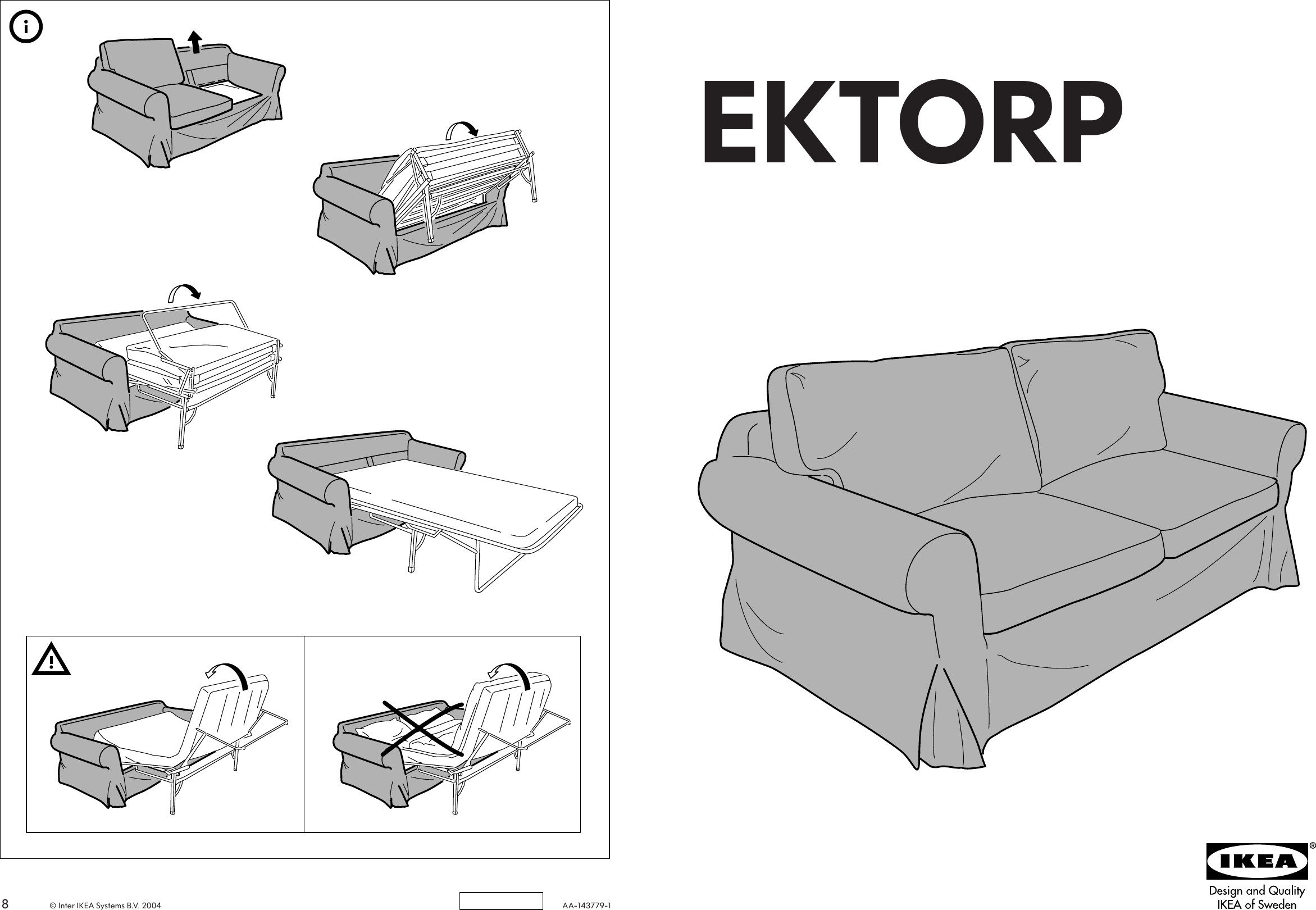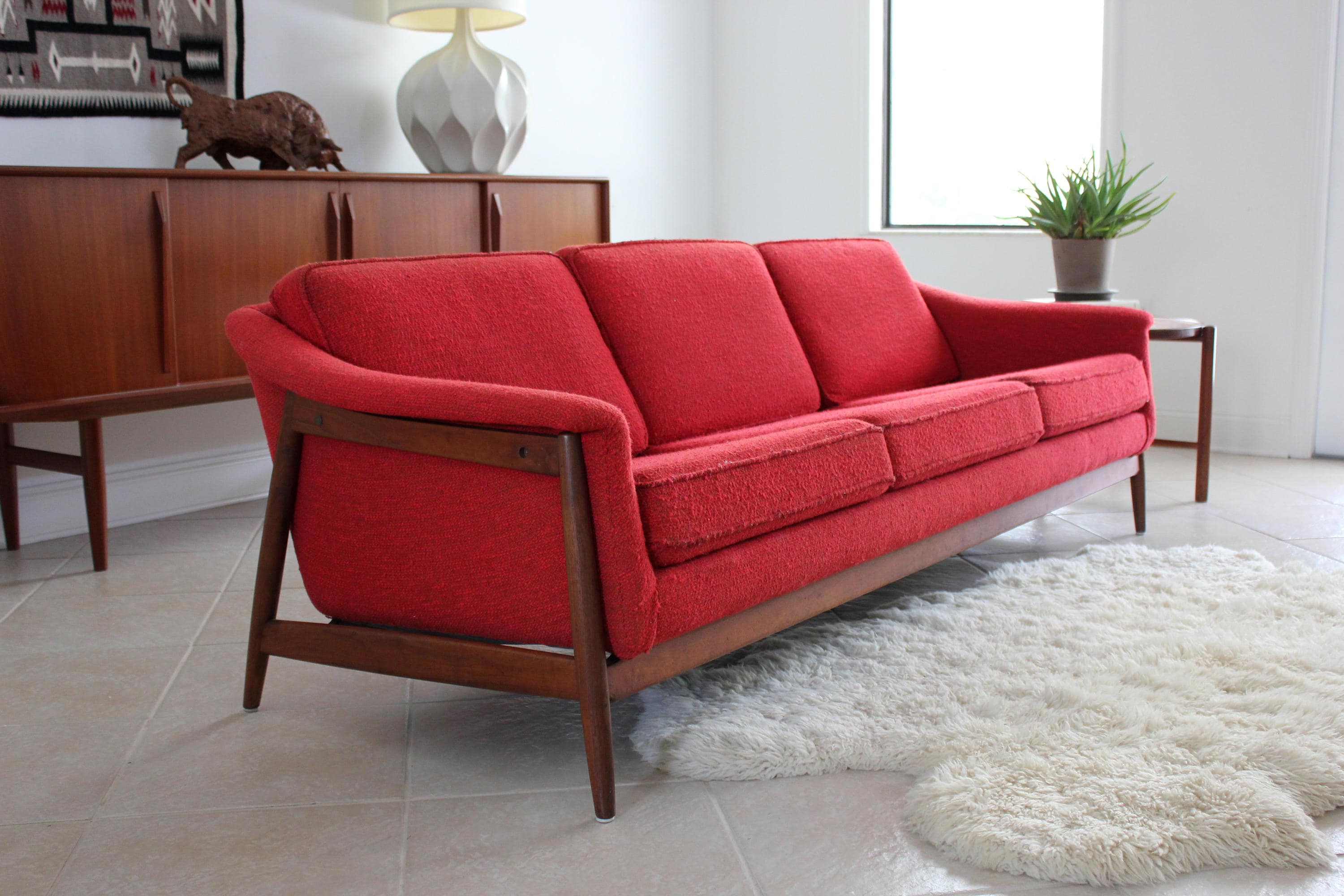If you have an old bathroom vanity that is starting to show its age, don't rush to replace it just yet. With the right techniques and a little bit of elbow grease, you can give your vanity a fresh new look and save yourself some money in the process. One of the easiest and most effective ways to update an old bathroom vanity is by staining it. Not only does staining give the vanity a new color and finish, but it also helps to protect the wood and extend its lifespan. Here are some tips and tricks for staining your old bathroom vanity.Staining Old Bathroom Vanity: Tips and Tricks
The first step in staining an old bathroom vanity is to remove all hardware, such as drawer pulls and cabinet knobs, and set them aside. Next, thoroughly clean the vanity with a mild soap and water to remove any dirt, grime, or residue. Once the vanity is completely dry, lightly sand the surface with a fine-grit sandpaper to remove any scratches and create a smooth surface for the stain to adhere to. Make sure to wipe away any dust with a tack cloth before moving on to the staining process.How to Refinish an Old Bathroom Vanity
Staining your old bathroom vanity is a great DIY project that can easily be done in a weekend. With a little bit of patience and attention to detail, you can achieve professional-looking results. One of the key things to keep in mind when staining your vanity is to choose the right stain color. Consider the overall style and color scheme of your bathroom and choose a stain that complements it. Some popular stain colors for bathroom vanities include dark walnut, espresso, and gray. You can also experiment with different techniques, such as layering multiple shades of stain or distressing the wood for a more rustic look.DIY Staining for an Old Bathroom Vanity
Staining is not only a great way to update the look of your old bathroom vanity, but it can also help to restore it. Over time, bathroom vanities can become damaged or faded, making them look dull and worn. Staining can help to bring back the natural beauty of the wood and give your vanity a fresh new look. Plus, by sealing the wood with stain, you can protect it from future damage caused by moisture and humidity in the bathroom.Restoring an Old Bathroom Vanity with Stain
When it comes to staining an old bathroom vanity, there are a few different techniques you can use to achieve different effects. One popular technique is to use a gel stain, which is thicker than traditional stain and allows for more control and precision. This is great for creating an even, consistent color on the wood. Another technique is to use a water-based stain, which is easier to clean up and has a faster drying time. You can also use a combination of both gel and water-based stains to create a unique look for your vanity.Staining Techniques for an Old Bathroom Vanity
Staining is a great way to completely transform the look of your old bathroom vanity. If you have a vanity that is outdated or doesn't match your personal style, staining can give it a whole new look. You can choose a stain color and finish that reflects your personal taste and complements the rest of your bathroom decor. Staining can also help to make your vanity look more expensive and high-end, even if it's an older piece.Transforming an Old Bathroom Vanity with Stain
If you're debating between staining or painting your old bathroom vanity, there are a few things to consider. While painting may seem like a quicker and easier option, it can actually be more difficult and time-consuming. Staining involves less prep work and dries faster, making it a more efficient process. Staining also allows the natural wood grain to show through, giving your vanity a more organic and high-end look. However, if you have a vanity that is made of particleboard or laminate, painting may be a better option as it can better cover any imperfections.Staining vs. Painting an Old Bathroom Vanity
When it comes to choosing a stain for your old bathroom vanity, there are a few factors to consider. First, consider the type of wood your vanity is made of. Different types of wood can take stain differently, so it's important to choose a stain that will work well with the wood you have. You should also consider the color and finish you want to achieve. If you're unsure, it's always a good idea to test the stain on a small, inconspicuous area of the vanity first before applying it to the entire piece.Choosing the Right Stain for an Old Bathroom Vanity
If you're ready to get started on staining your old bathroom vanity, here is a step-by-step guide to help you through the process:Step-by-Step Guide to Staining an Old Bathroom Vanity
While staining an old bathroom vanity may seem like a simple project, there are some common mistakes that can easily be made. To avoid any mishaps, here are some things to keep in mind:Common Mistakes to Avoid When Staining an Old Bathroom Vanity
Transform Your Bathroom Vanity with Staining

Why Stain Your Old Bathroom Vanity?
 If you're looking to give your bathroom a fresh new look without breaking the bank, staining your old bathroom vanity is an easy and cost-effective solution. Not only does it add a touch of elegance and sophistication to your bathroom, but it also covers up any wear and tear that your vanity may have accumulated over the years. Staining your bathroom vanity can also be a fun and creative project, allowing you to customize the color and finish to match your personal style and overall house design.
If you're looking to give your bathroom a fresh new look without breaking the bank, staining your old bathroom vanity is an easy and cost-effective solution. Not only does it add a touch of elegance and sophistication to your bathroom, but it also covers up any wear and tear that your vanity may have accumulated over the years. Staining your bathroom vanity can also be a fun and creative project, allowing you to customize the color and finish to match your personal style and overall house design.
The Staining Process
 Staining your old bathroom vanity may seem like a daunting task, but with the right tools and techniques, it can be a simple and rewarding DIY project. The first step is to properly prepare the vanity by removing any hardware and thoroughly cleaning the surface. Next, you'll need to sand down the existing finish to create a smooth surface for the stain to adhere to. Once the surface is prepped, you can begin applying the stain using a brush or cloth, making sure to follow the grain of the wood for an even finish. After the stain has dried, you can add a top coat to protect the surface and give it a polished look.
Staining your old bathroom vanity may seem like a daunting task, but with the right tools and techniques, it can be a simple and rewarding DIY project. The first step is to properly prepare the vanity by removing any hardware and thoroughly cleaning the surface. Next, you'll need to sand down the existing finish to create a smooth surface for the stain to adhere to. Once the surface is prepped, you can begin applying the stain using a brush or cloth, making sure to follow the grain of the wood for an even finish. After the stain has dried, you can add a top coat to protect the surface and give it a polished look.
Benefits of Staining
 Not only does staining your bathroom vanity give it a brand new look, but it also has many other benefits. Staining can help to protect the wood from moisture and humidity, making it a great option for bathrooms. It also allows you to keep the natural beauty of the wood while still giving it a new look. Staining also offers a variety of color options, from light to dark, allowing you to match it to your existing bathroom decor or create a whole new color scheme.
Not only does staining your bathroom vanity give it a brand new look, but it also has many other benefits. Staining can help to protect the wood from moisture and humidity, making it a great option for bathrooms. It also allows you to keep the natural beauty of the wood while still giving it a new look. Staining also offers a variety of color options, from light to dark, allowing you to match it to your existing bathroom decor or create a whole new color scheme.
Conclusion
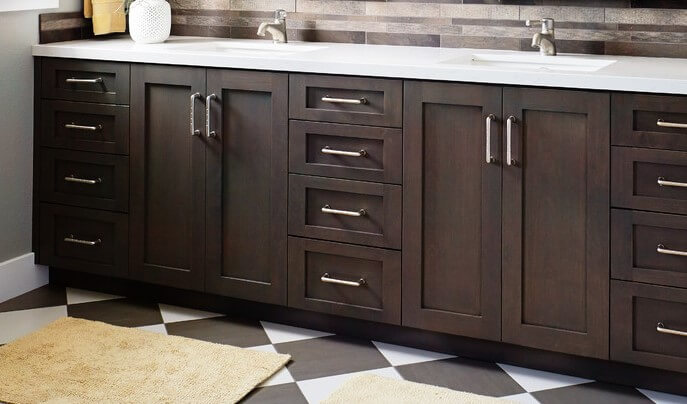 Staining your old bathroom vanity is a simple and cost-effective way to transform your bathroom and add a touch of elegance to your house design. With the right tools and techniques, you can easily achieve a professional-looking finish and customize it to your personal style. So why spend money on a new vanity when you can give your old one a new life with a fresh coat of stain? Follow these steps and see the amazing difference it can make in your bathroom.
Staining your old bathroom vanity is a simple and cost-effective way to transform your bathroom and add a touch of elegance to your house design. With the right tools and techniques, you can easily achieve a professional-looking finish and customize it to your personal style. So why spend money on a new vanity when you can give your old one a new life with a fresh coat of stain? Follow these steps and see the amazing difference it can make in your bathroom.





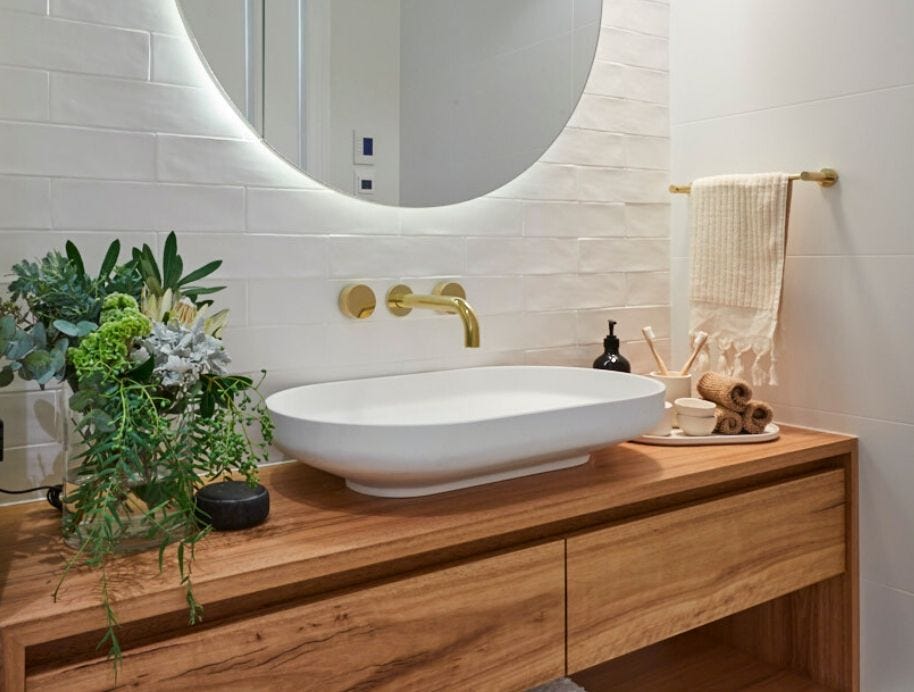
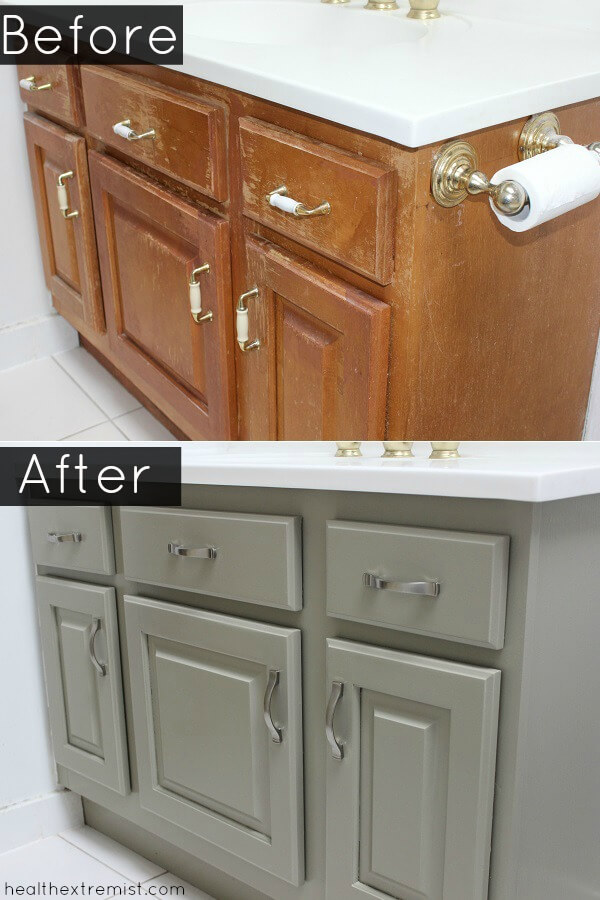

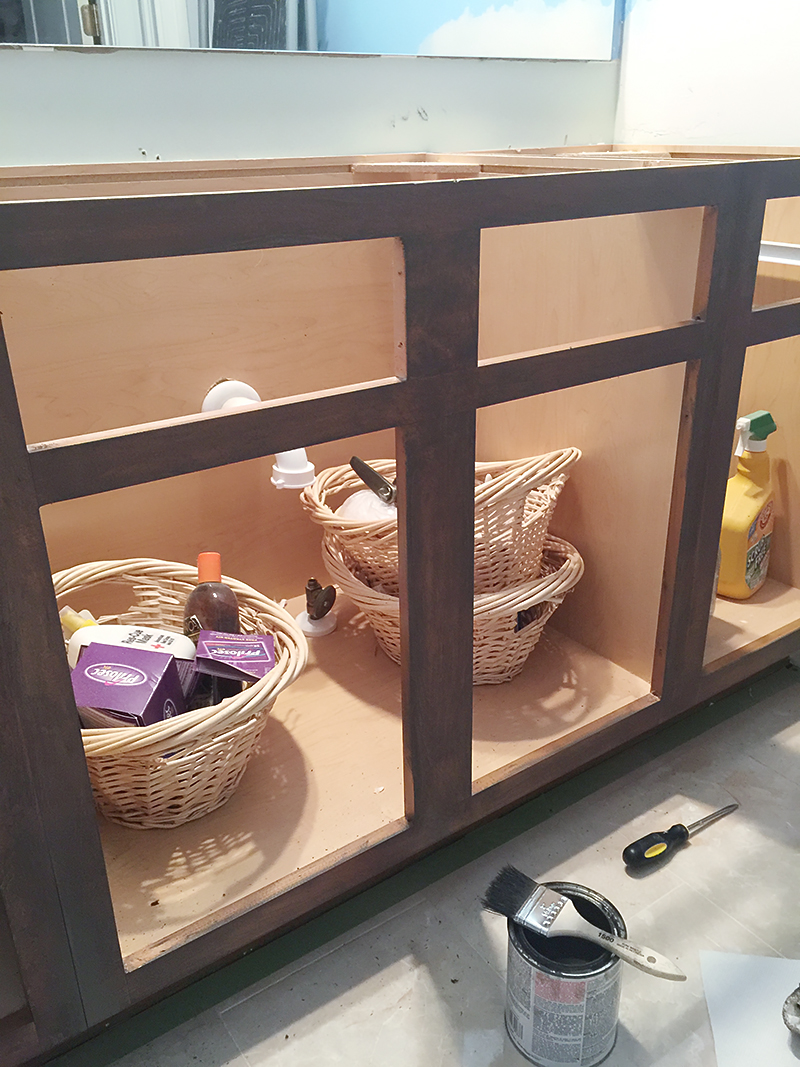

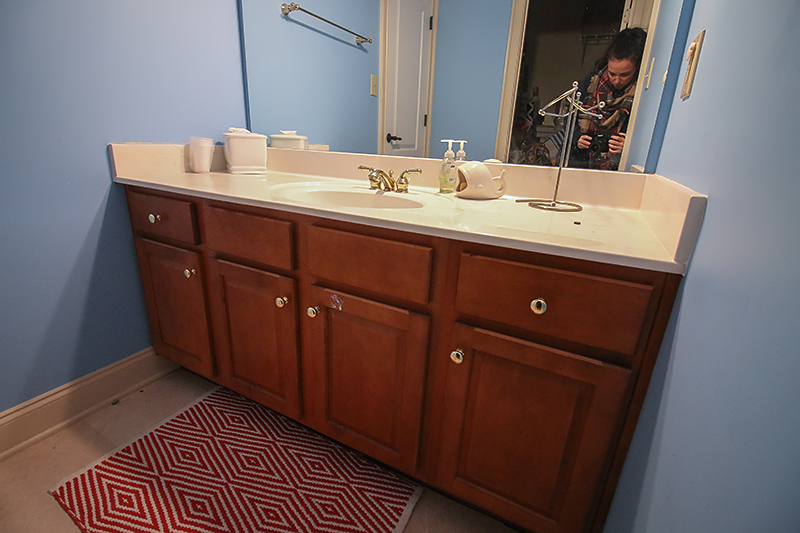
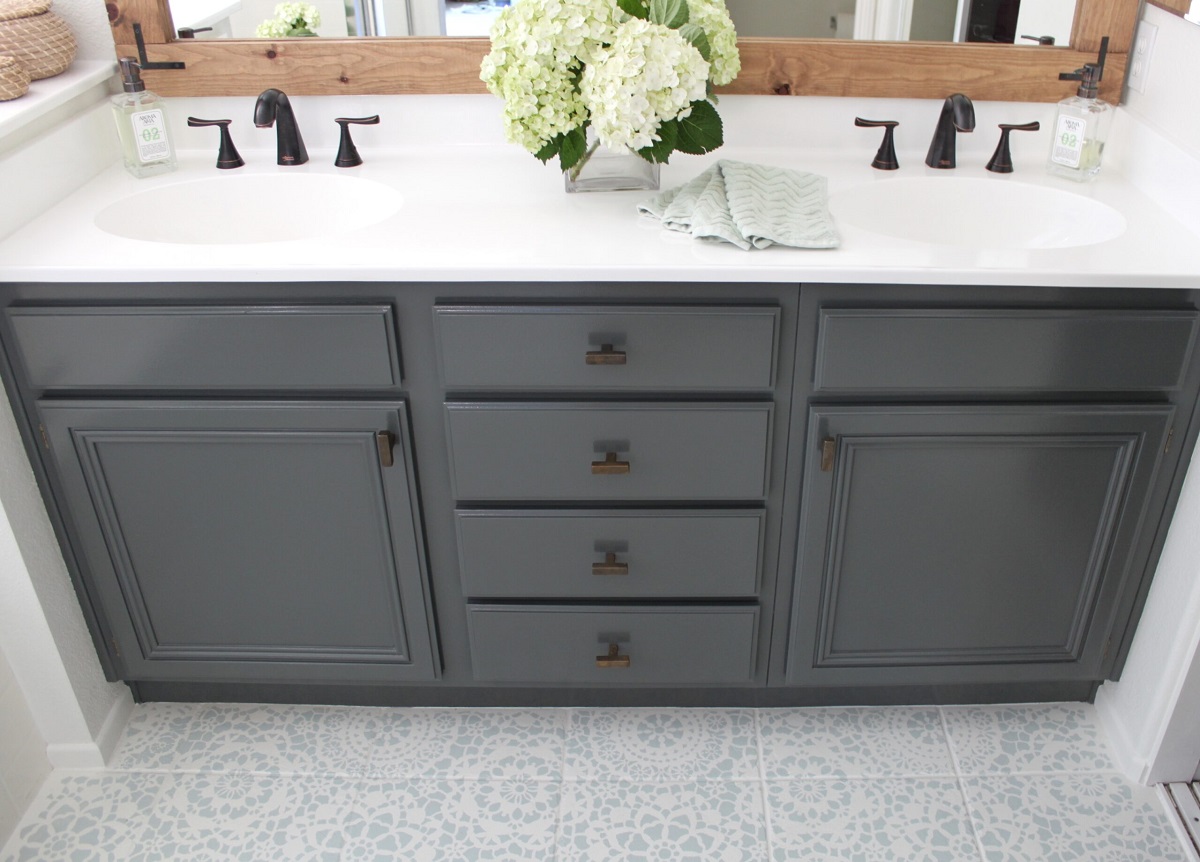





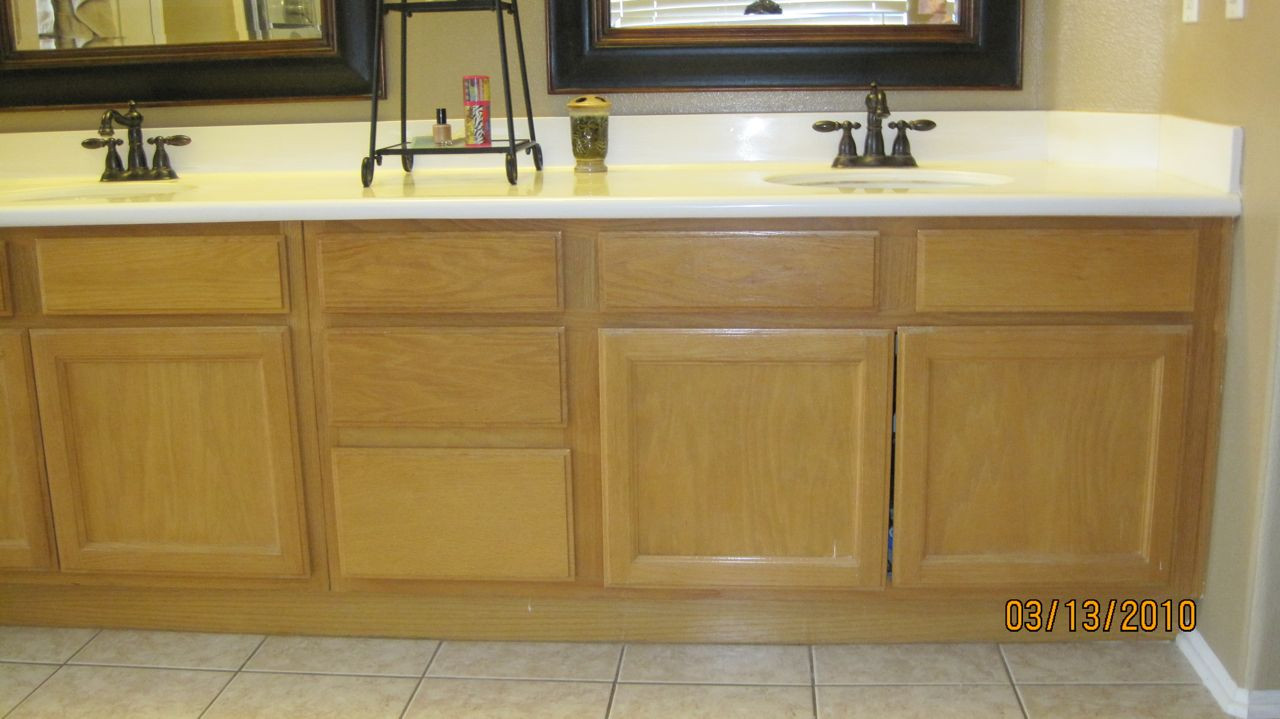


/cherry-diy-bathroom-vanity-594414da5f9b58d58a099a36.jpg)
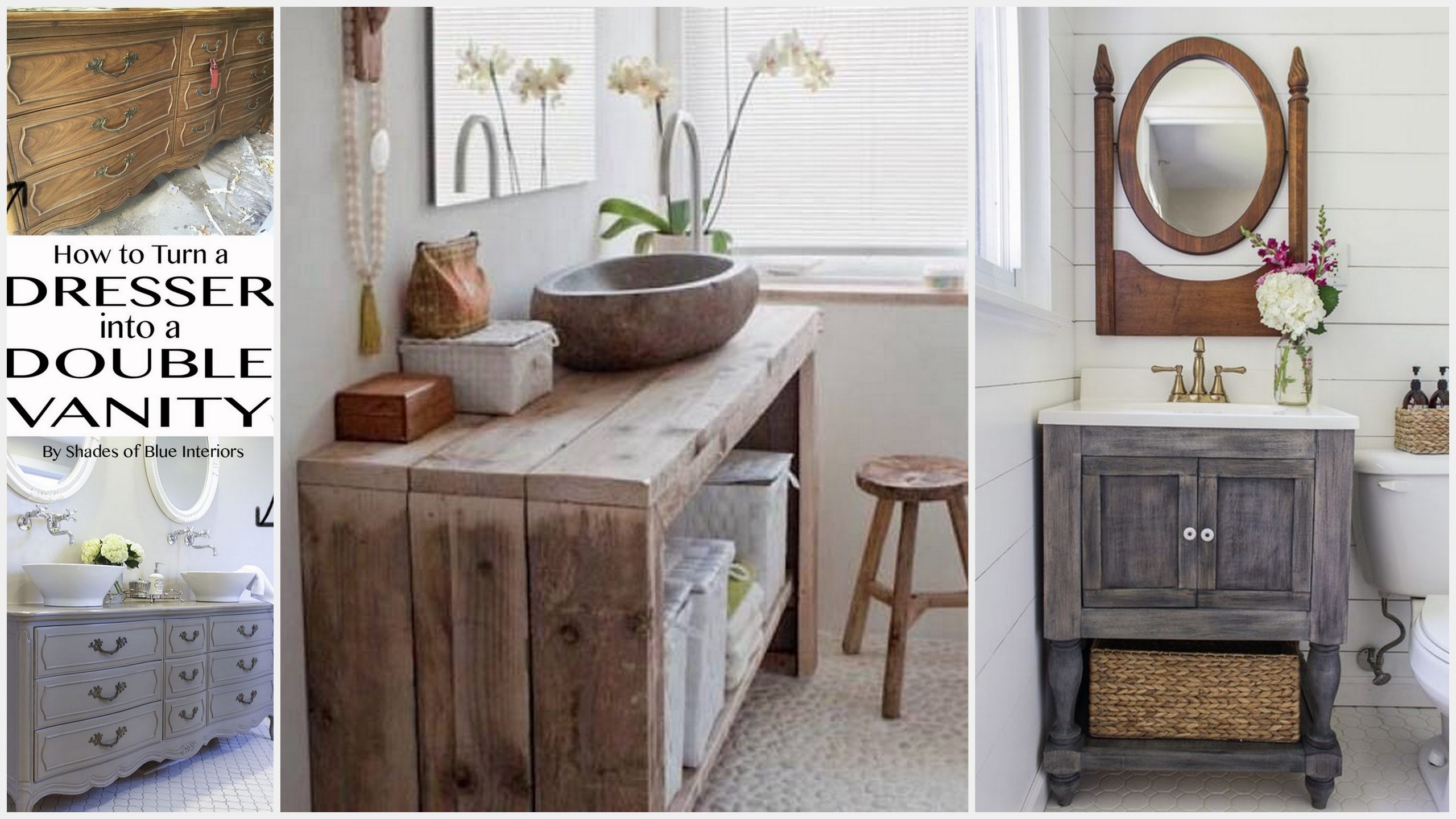

:max_bytes(150000):strip_icc()/build-something-diy-vanity-594402125f9b58d58ae21158.jpg)

